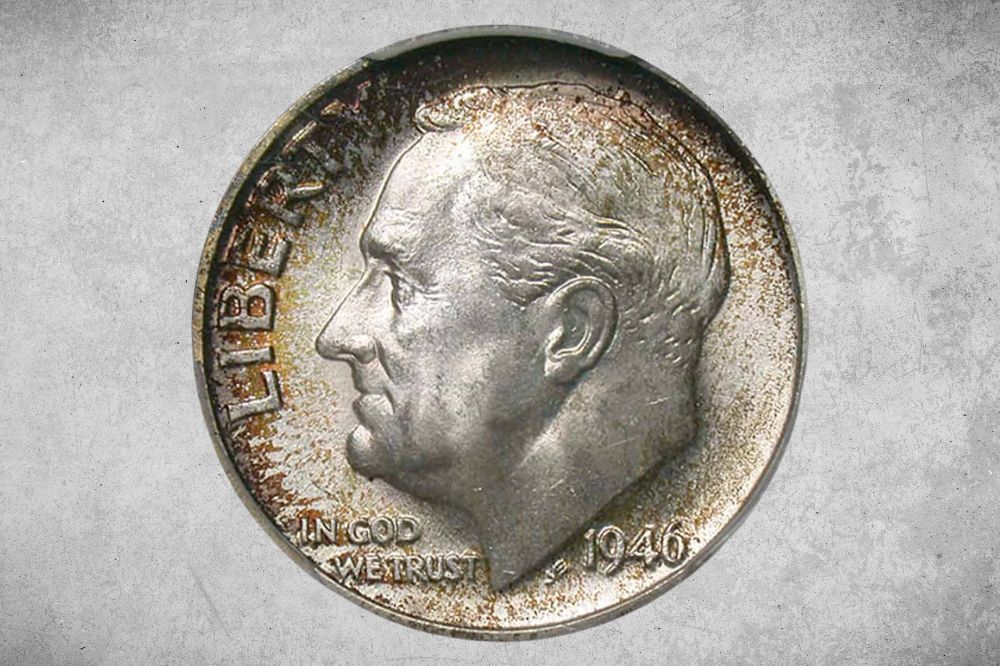Do you have a penchant for coin collecting? Get to know about the current 1946 dime value through our detailed guide below. Here, we will talk about the basic information associated with the coin such as its physical features, history, and varieties.
In addition, we will cover some technical aspects like the grading and the valuation of the coin. Having an idea of these areas is very helpful in your quest to collect US coins. So, let’s get started with the key details of the 1946 dime.
1946 Dime Details
- Category: Roosevelt dime
- Mintage: San Francisco, Philadelphia, and Denver
- Total mintage: 344,193,500
- Obverse designer: John R. Sinnock
- Reverse designer: John R. Sinnock
- Edge: Reeded
- Diameter: 17.9mm
- Thickness: 0.06889 inches
- Composition: Silver and copper
- Weight: 2.5 grams
- ASW: 0.0723oz
The 1946 dime signaled the start of the Roosevelt coin series, which was created in honor of the beloved former president of the United States, Franklin Roosevelt. The former leader of the country died in 1945 and was loved by many.
And to acknowledge the excellence of the late president who devoted his life to economic justice and modern liberalism, the US Mint created the 1946 Dime. John R. Sinnock’s design was chosen by the Commission, although there were controversies that bound the design years after.
During the early productions of the Roosevelt dimes, the coins were significantly made from silver. However, there were modifications in the composition after 1964. The silver content is actually linked to the reason why the $0.10 coin is smaller than the $0.05 coin.
It’s because the Roosevelt dimes are made of 90% silver and 10% copper. This means that if these were produced with a bigger dimension, the melt value of the silver would surpass the face value. As a result, the US Mint opted for tiny and thin dimes.
Accordingly, the dimes are the smallest and thinnest among all other US coins. The 1946 dime, in particular, only has a diameter of 17.9mm and a thickness of 0.06889 inches. As to the design of these coins, the obverse side features the portrait of Franklin Roosevelt.
The image of the president faces the left section of the coin, which also imprints the word “LIBERTY”. Just below the chin is the famous motto “IN GOD WE TRUST” as well as the initials of the designer “JD”. The year 1946 can also be found in the obverse area, specifically on the right side.
Meanwhile, the reverse section of the coin contains a series of elements. There are three main features on the tail side―and these are an olive bran, an oak branch, and a flaming torch. Each element symbolizes an important aspect of the nation, which are peace, strength, and liberty.
Aside from the key images, you’d also come across the traditional US motto “E Pluribus Unum”, which means “Out of many, one”. In addition, there are markings on the above and below sections of the E Pluribus Unum motto. These are the “UNITED STATES OF AMERICA” and “ONE DIME”.
1946 Dime Value Chart |
||||||
| Mint Year | Fine | Extremely Fine | Uncirculated | MS 60 | MS 65 | MS 68 |
| 1946 Dime | $2.03 | $2.14 | $2.26 | $5.80 | $14 | $2,800 |
| 1946 S Dime | $2.03 | $2.14 | $2.26 | $5.80 | $17 | $3,800 |
| 1946 D Dime | $2.03 | $2.14 | $2.26 | $5.80 | $23 | $4,200 |
1946 Dime Value and Varieties
Even with the passing of time, the Roosevelt dimes are still widely used in the current market. One key example is the 1946-coin, which was produced decades ago. The value of the coin, either in fine or extremely fine condition, can be purchased from $2.03 to $2.14.
On the other hand, minted coins with a higher grade are definitely more expensive. In terms of valuation, an MS 60 coin would hit around $5.80 while an MS65 ranges between $14 to $23. Accordingly, coins produced in Denver have more value than those minted in Philadelphia and San Francisco.
For MS 68 coins, these are way more valuable. A no-mint mark can even get as far as $2,800 whereas a 1946 S Dime is estimated at $3,800. And if you’ve got a D coin with a grade of MS68, you’d score at least $4,200.
Because of this, no wonder these coins continue to entice anyone who wants to complete their US Dime series collection. To better comprehend the different classifications of the 1946 Dime, here’s a detailed run-through of each variety.
1946 Dime
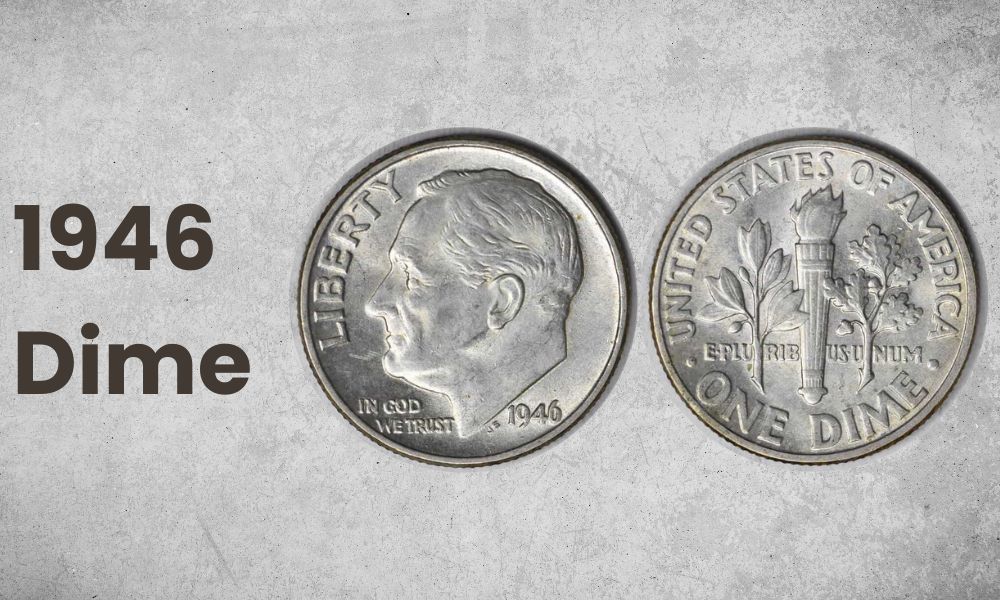
- Type: Roosevelt dime
- Edge: Reeded
- Mint mark: None
- Place of minting: Philadelphia
- Year of minting: 1946
- Face value: $0.10
- $ price: $2.03 to $2,800
- Quantity produced: 255,250,000
- Designer: John R. Sinnock
The 1946 Dime generally refers to the coins produced in Philadelphia, which was the main minting location in the country. There were over 255 million no-mint mark coins created during the first year of minting, making it one of the biggest productions of silver coins in history.
And because of the millions of coins produced during that year, these are very abundant up to now. In fact, these are still circulated in the market. Interestingly, dimes even with poor grades are considered remarkable by collectors. It’s because of the coin’s silver content that makes them fascinating.
On the other side, finding 1946 dimes that are in mint condition may be a challenge. This is the reason why MS 68 or higher grades are very expensive. Collectors would spend more just to get a hold of these rare pieces and add them to their collections.
1946 S Dime
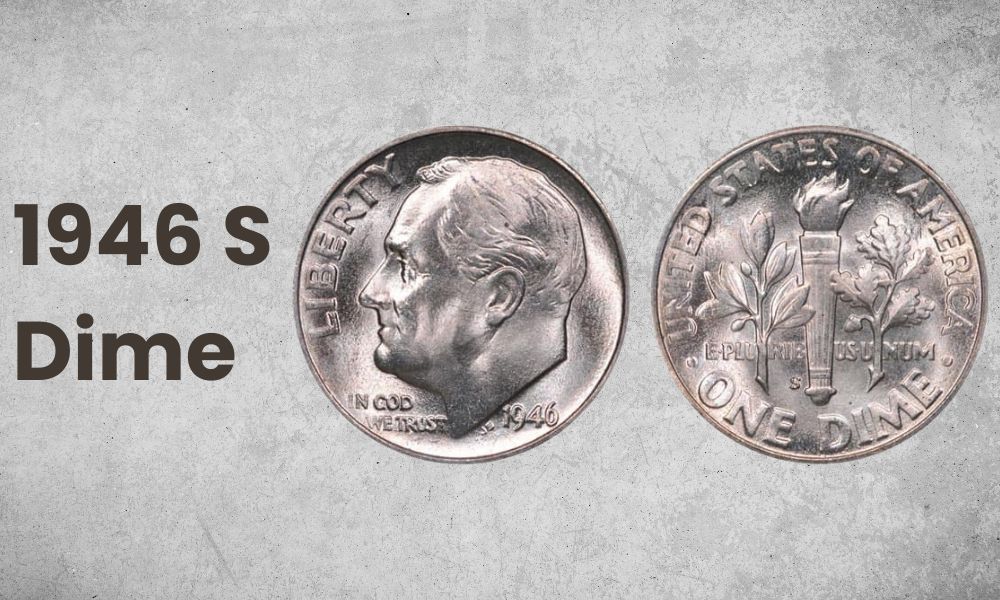
- Type: Roosevelt dime
- Edge: Reeded
- Mint mark: None
- Place of minting: San Francisco
- Year of minting: 1946
- Face value: $0.10
- $ price: $2.03 to $3,800
- Quantity produced: 27,900,000
- Designer: John R. Sinnock
Aside from Philadelphia, there was also a production of Roosevelt dimes in San Francisco in the year 1946. During this period, the city produced almost 28M coins to keep up with the demands of the economy. And these were relatively enough for circulation in the market.
And to distinguish the coins from those that were produced in the main mint facility, the Commission added the letter “S” on the reverse side of the coin. This mark is positioned right beside the flaming torch, on the left side.
Accordingly, the value of a 1946 S Dime is pretty similar to the no-mint coins. These were appraised starting at $2.03 and may reach up to $2.26 for uncirculated ones. An MS68 from San Francisco is also attractive for collectors, valuing up to $3,800.
1946 D Dime
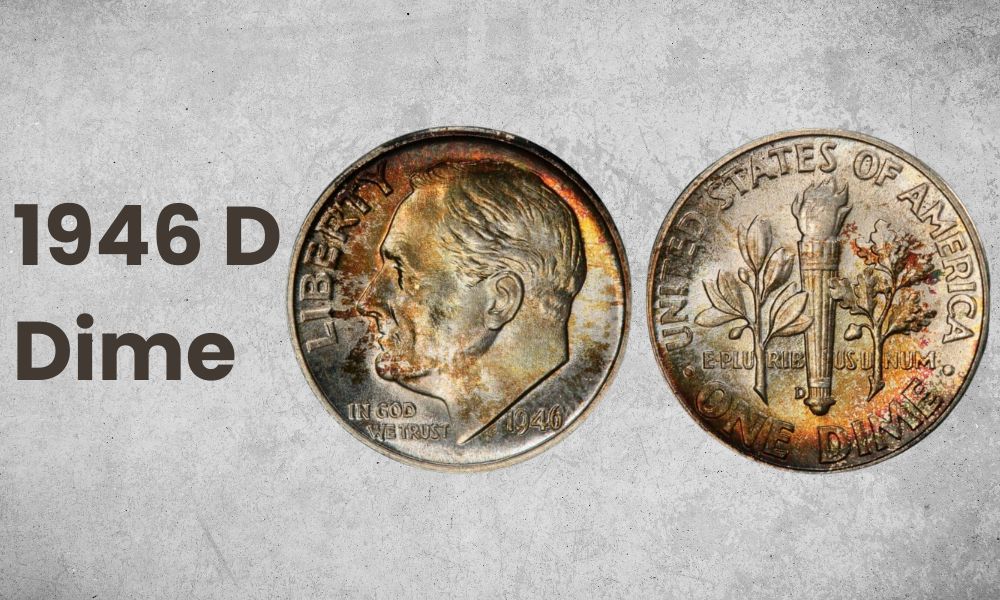
- Type: Roosevelt dime
- Edge: Reeded
- Mint mark: None
- Place of minting: Denver
- Year of minting: 1946
- Face value: $0.10
- $ price: $2.03 to $4,200
- Quantity produced: 61,043,500
- Designer: John R. Sinnock
The last mint location for the 1946 dimes was Denver, which produced over 61 million pieces. The large number was due to the retirement of the Mercury dime series, hence the need to supply ample amounts of dimes for commerce.
Just like the no-mint coins, most of the 1946 D dimes are still in circulation up to the present time. The value of a good-condition coin is also the same as the other varieties. They only differ with dimes that are in mint state, particularly MS 65 and higher. In general, Denver-minted coins come with a hefty tag.
Since high-quality coins come with excellent physical attributes and remarkable condition, these typically range from $23 to $4,200. And of course, you can easily determine these dimes because of the “D” imprint on the reverse section of the coin.
1946 Dime History
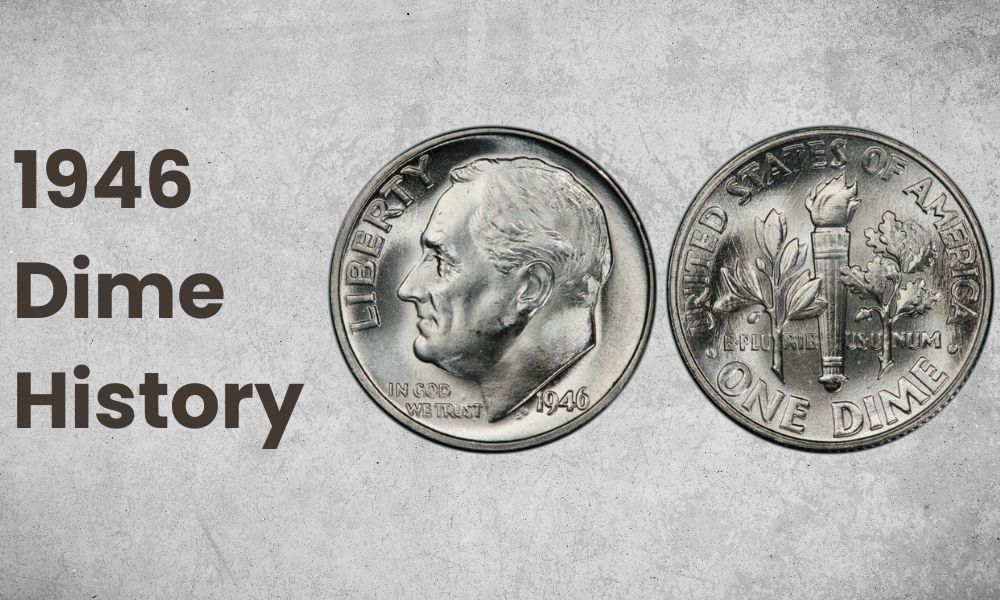
As one of the memorabilia created in honor of the late president Roosevelt, the 1946 Dime holds a very special place in many collectors’ hearts. Franklin Roosevelt has always been reputed as one of the most outstanding leaders in the country.
In fact, he was the only four-term president, who spiraled the nation towards greatness after the difficulties of the Great Depression. More so, he was the symbol of strength that gave people hope during World War II.
Because of his impact on the people and the economy, many were saddened by his death in 1945. This is the reason why the 1946 Dime was formed. More so, it is believed that the Treasury Department opted for a dime because it symbolizes the causes highly regarded by Roosevelt.
Although not known to many, the late president actually suffered from polio. Accordingly, choosing dime seemed the most remarkable choice because he founded the nonprofit organization known as March of Dimes. This group focuses on combatting polio and improving the health of both mothers and babies.
Accordingly, after the death of Roosevelt, the US Mint tasked Chief Engraver John R. Sinnock to create a design for the coin. There were several revisions before the Commission approved the designs for both obverse and reverse sides.
Aside from the portrait of Roosevelt on the surface, there were large mottos engraved on the coin like the word “LIBERTY”, “IN GOD WE TRUST”, and “UNITED STATES OF AMERICA”, among others. The initials of the designer, JS, were also etched on the surface.
However, the JS initials become one of the controversies that surrounded the 1946 Dime. Some believed that the initials were in reference to Joseph Stalin, who was the Soviet leader. Apart from this outrageous claim, which was denied by Sinnock himself, another issue arose.
Decades after the first production of the coins, Selma Burke accused Sinnock of plagiarizing the design. The African American sculptor appealed that the depiction of the Roosevelt image on the dime was copied and she was the original creator, a claim denied again by Sinnock.
While these issues continued even after many years, the dimes were relentlessly produced even up to the present. There were only a few modifications made in the subsequent years, specifically in 1968 and 1981. These were done to ensure quality production and to meet the modern demands of the US coins.
1946 Dime Grading
There are two major determining factors when grading a 1946 dime. First, the condition of the coin takes part in the assignment of the grade. Second, the mint location also impacts the value of the dime. Denver-minted coins are the most valuable pieces compared to those created in Philadelphia and San Francisco.
1946 Dime Error
Errors in production can happen, especially when it comes to large manufacturing of coins. There are several issues that affect the minting process and eventually the coin output. And for the 1946 production, here are some errors and rarities that occurred:
1. 1946 D Dime D/D RPM
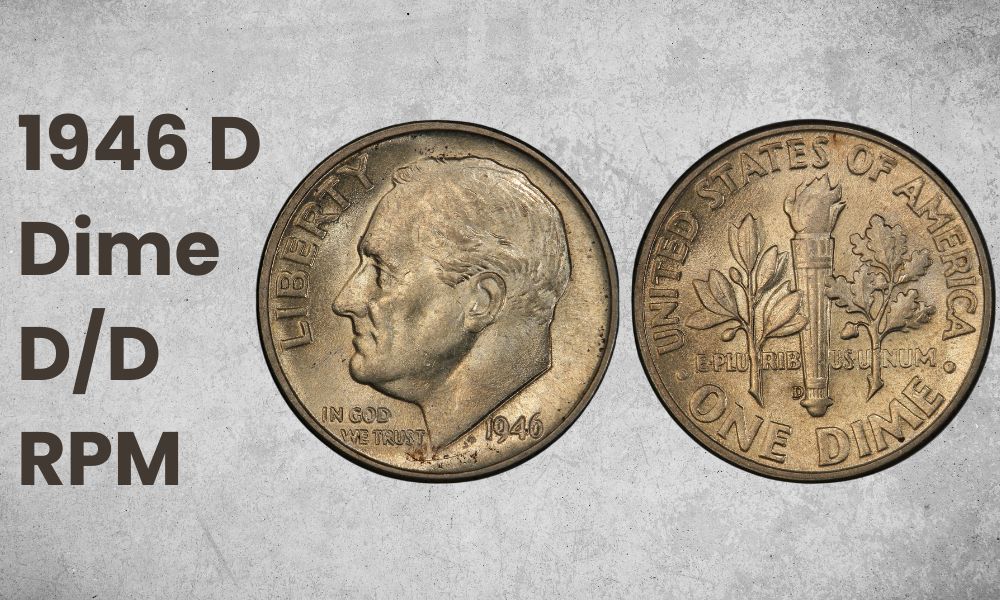
Because of the significant number of coins produced in Denver, there was a batch of dimes with a re-punched mark. Also called RPM, this error arises when foreign elements reach the planchet, resulting in variation in the design.
Consequently, the mint marks were incorporated again, but this time using the hand. Furthermore, there’s a possibility that the assigned person made a mistake again, hence the need for another strike. Because of the uniqueness of the error, these coins are valued between $50 and $150.
2. 1946 Dime Doubled-die Reverse
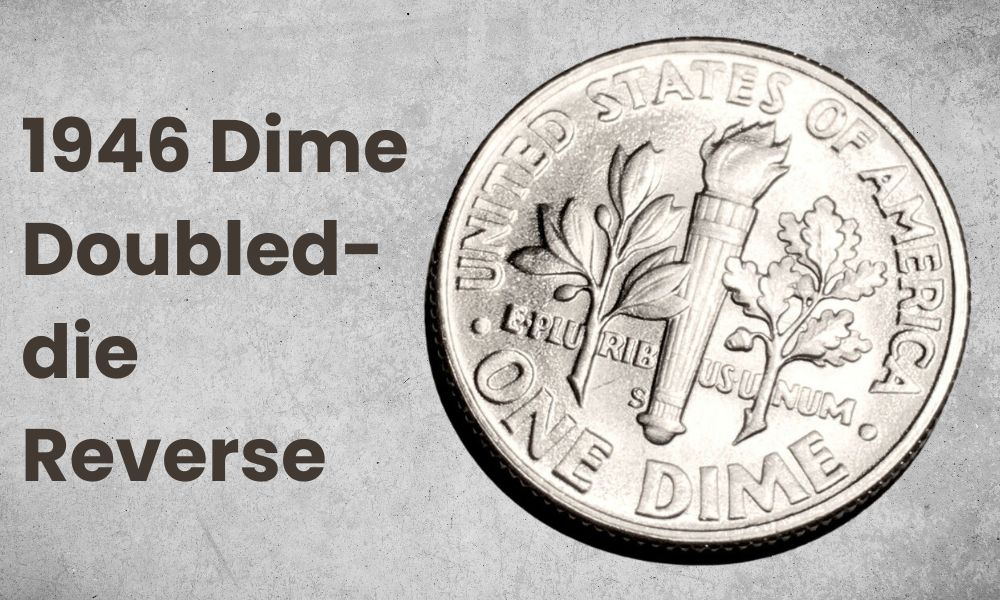
Double-die errors on the reverse side were quite popular for both Philadelphia and San Francisco minting. Instead of only one imprint of design, there is a duplication of elements due to the incorrect placement or misalignment of the die during the striking process.
3. 1946 Dime Broad-struck Error
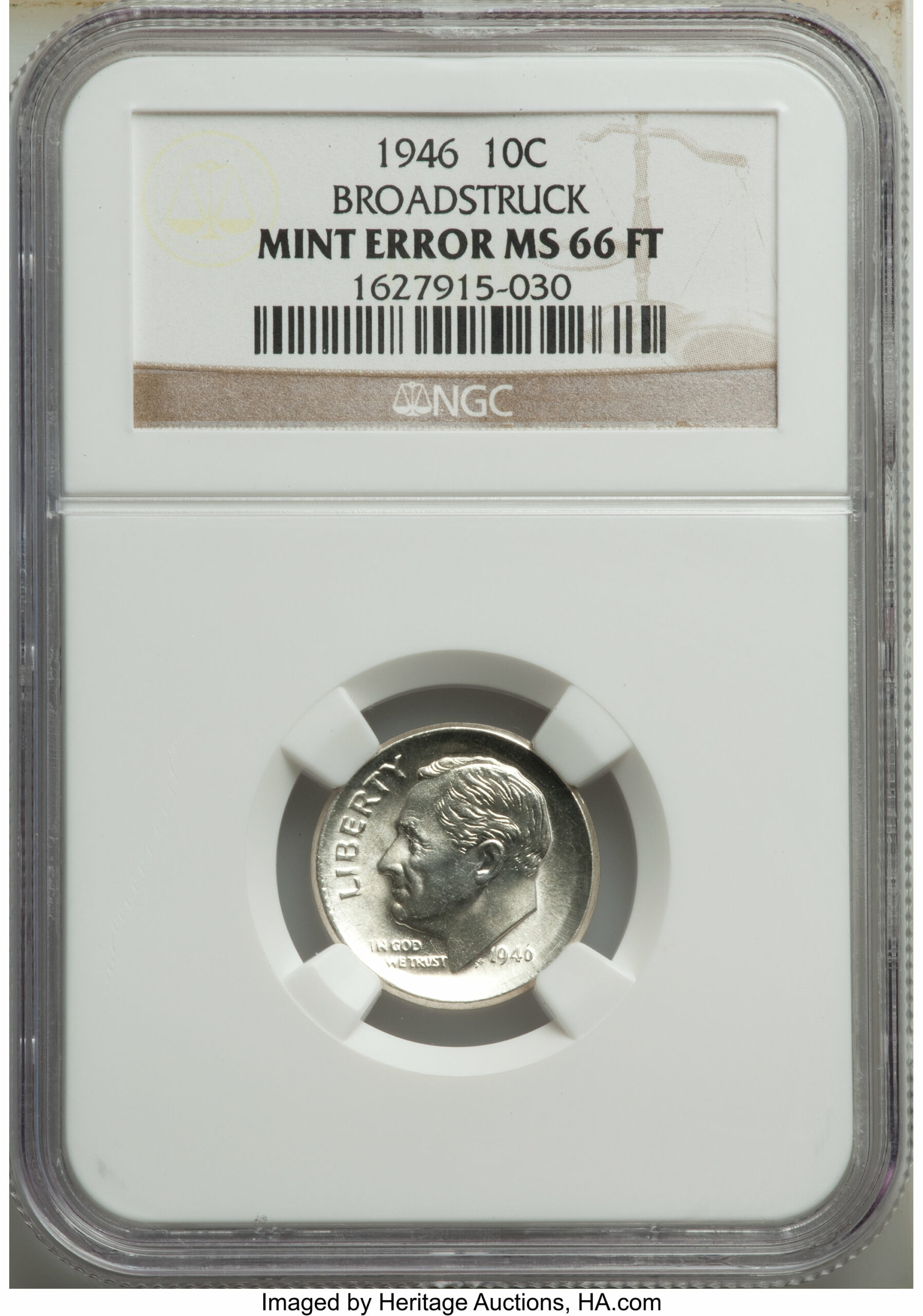
There were also some 1946 coins with broad-struck issues. These errors were characterized by a flatter surface compared to the circular size with a seemingly perfect depth. Some coins even have distorted shapes. But interestingly, these coins have more value than normal ones, probably around $100.
1946 Dime FAQ
1. How much is a 1946 dime worth today?
According to experts, the current value of an average 1946 Dime is $2.03. Circulated ones, however, can be bought at $2.26 while mint state coins settle around $5.80 to $4,200.
2. Is a 1946 dime all silver?
All 1946 Dimes contained 90% silver. The composition was the same up until 1964. A year after, the Coinage Act was passed. With the new law, dimes were now made of 75% copper and 25% nickel.
3. Where is the mint mark on the 1946 dime?
All mint marks for the 1946 dimes were on the reverse side of the coin. These were placed on the left area of the torch. The mark could be “D” for Denver and “S” for San Francisco. Meanwhile, coins manufactured in Philadelphia do not have mint marks.
